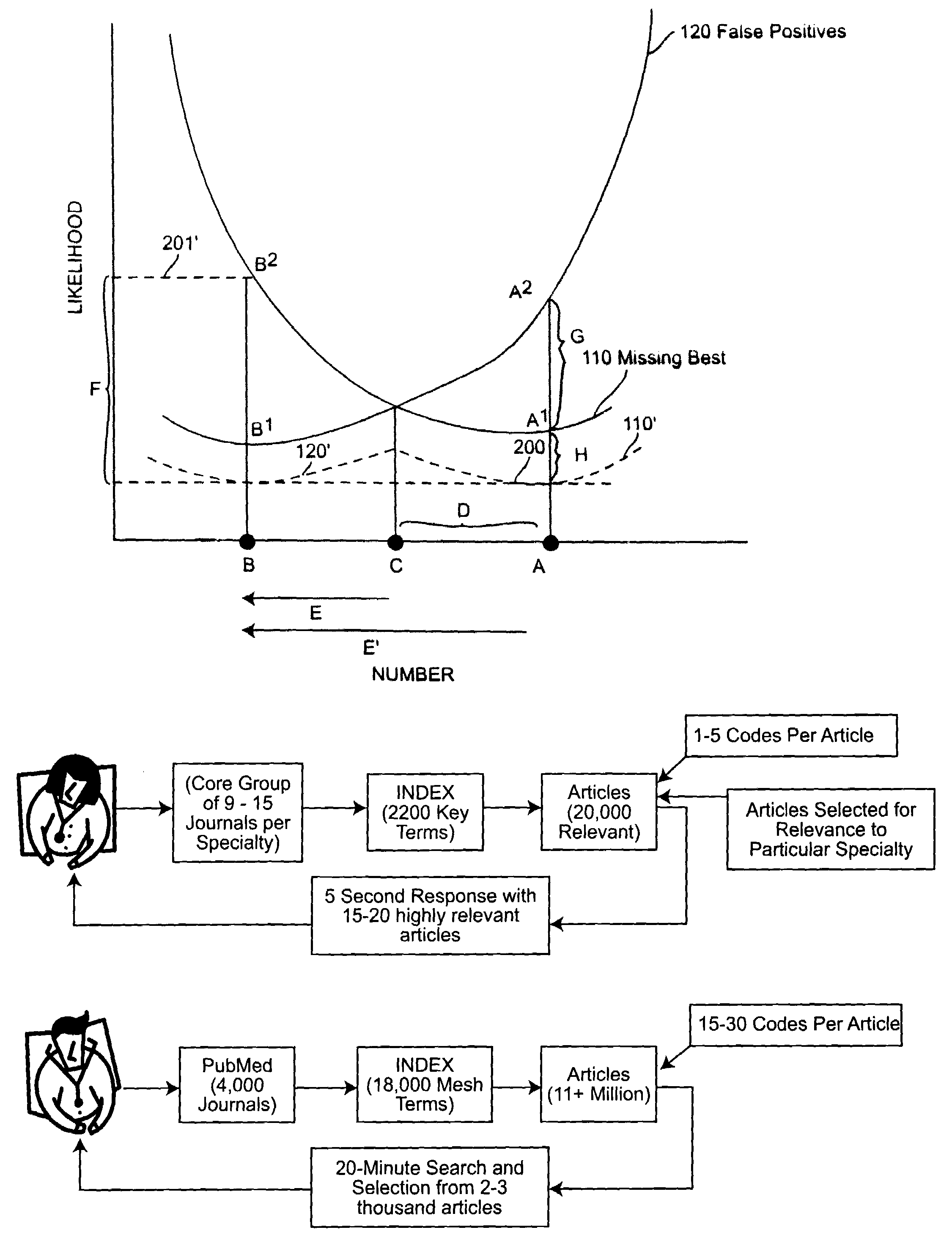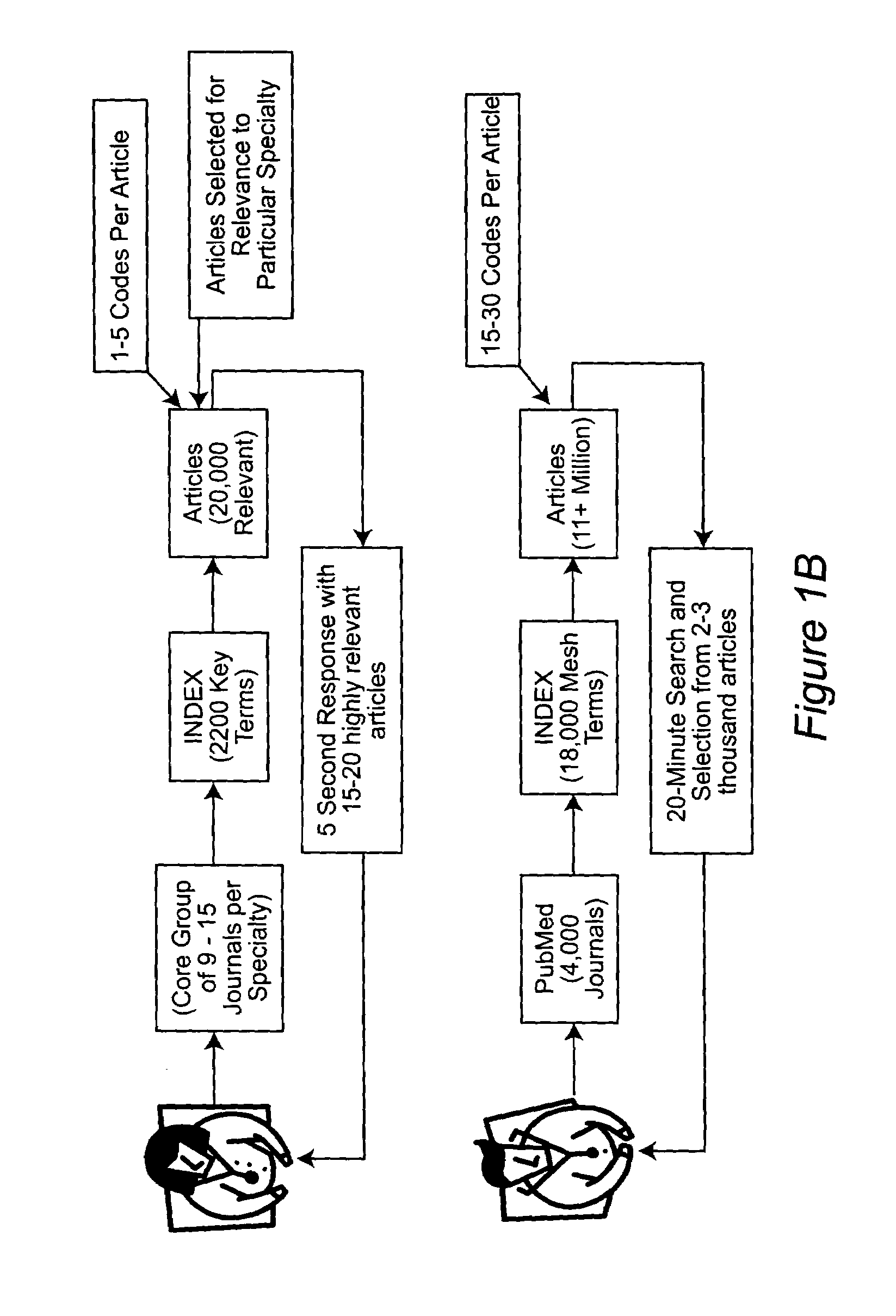Database and index organization for enhanced document retrieval
a database and index technology, applied in the field of customized, specialty-oriented database and index, can solve the problems of time-consuming, overwhelming, frustrating and impractical tasks, and increasing the amount of irrelevant and inaccurate information (often referred to as “noise”)
- Summary
- Abstract
- Description
- Claims
- Application Information
AI Technical Summary
Benefits of technology
Problems solved by technology
Method used
Image
Examples
example 1
Coding of an Article and Assignment to Specialty Collection
[0083]FIGS. 4A and 4B show a representation of an exemplary Master Index for use in the development of a healthcare database. FIGS. 4A and B show only the most general heading and subheadings of the Index. Detailed exemplary sections of the Index within the B (Cardiovascular / Peripheral Vascular) and V (Respiratory / Chest) headings are given in FIGS. 5A and B, respectively.
[0084]For the development of, for example, a Cardiology specialty collection within the database, a group of core professional journals is selected by at least one expert in the field of cardiology. One of the journals that is selected is, for example, The American Journal of Medicine. In order to develop the specialty collection, the table of contents (TOC) of an issue of the journal is reproduced and each article that is deemed suitable for inclusion in the collection is classified as to type (e.g editorial, review, case study, original or miscellaneous). ...
example 2
Use of the Database of the Present Invention in Comparison to PubMed
[0088]Due to the nature of the database of the present invention, the efficiency of the search engine is far superior to that of other presently known search engines such as PubMed. Table 1 describes the search efficiency using the customized database of the present invention, compared to a National Library of Medicine (NLM) based search.
[0089]
TABLE 1Search efficiencyCustomizedCharacteristicDatabaseNLM basedAverage search time2-3 minutes12-20 minutesNumber of index terms in thesaurus2,20022,000Number of citations retrieved per search5 to 2520 to 40,000Availability / lag time from publication10 weeksRetrieval relevancy or precision*96 to 100%40 to 60%*Retrieval relevancy or precision was determined by an expert reviewer.
[0090]As can be seen, use of the search engine, database and methods of the present invention results in the rapid retrieval of a manageable number (e.g. about 5 to about 20) of current, highly relevant...
PUM
 Login to View More
Login to View More Abstract
Description
Claims
Application Information
 Login to View More
Login to View More - R&D
- Intellectual Property
- Life Sciences
- Materials
- Tech Scout
- Unparalleled Data Quality
- Higher Quality Content
- 60% Fewer Hallucinations
Browse by: Latest US Patents, China's latest patents, Technical Efficacy Thesaurus, Application Domain, Technology Topic, Popular Technical Reports.
© 2025 PatSnap. All rights reserved.Legal|Privacy policy|Modern Slavery Act Transparency Statement|Sitemap|About US| Contact US: help@patsnap.com



